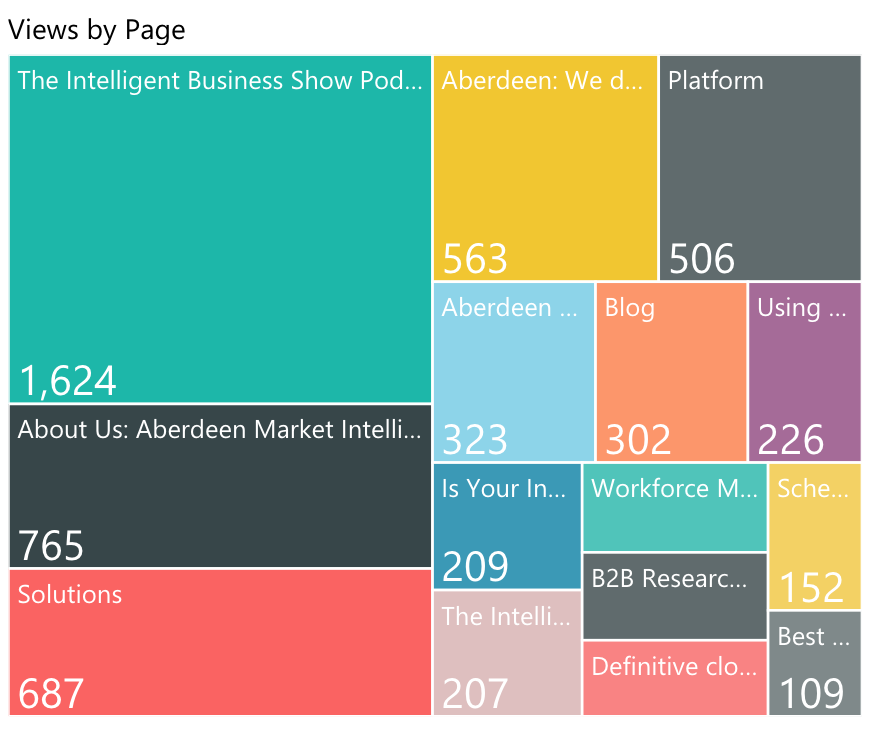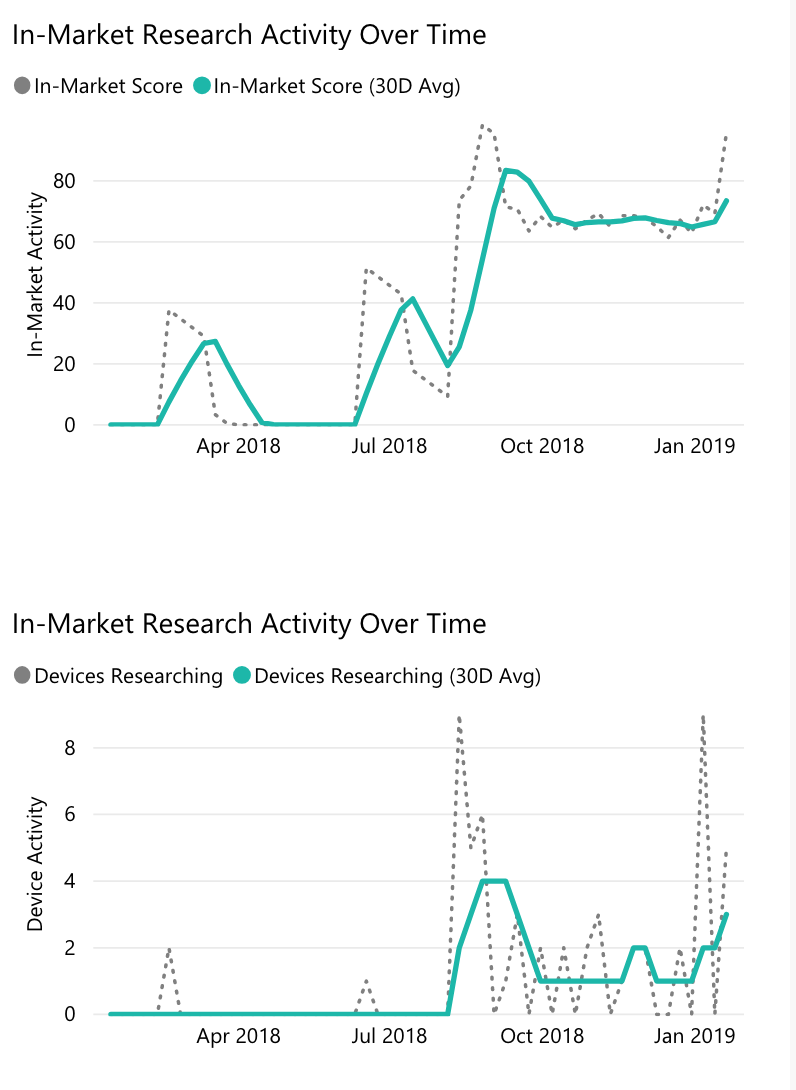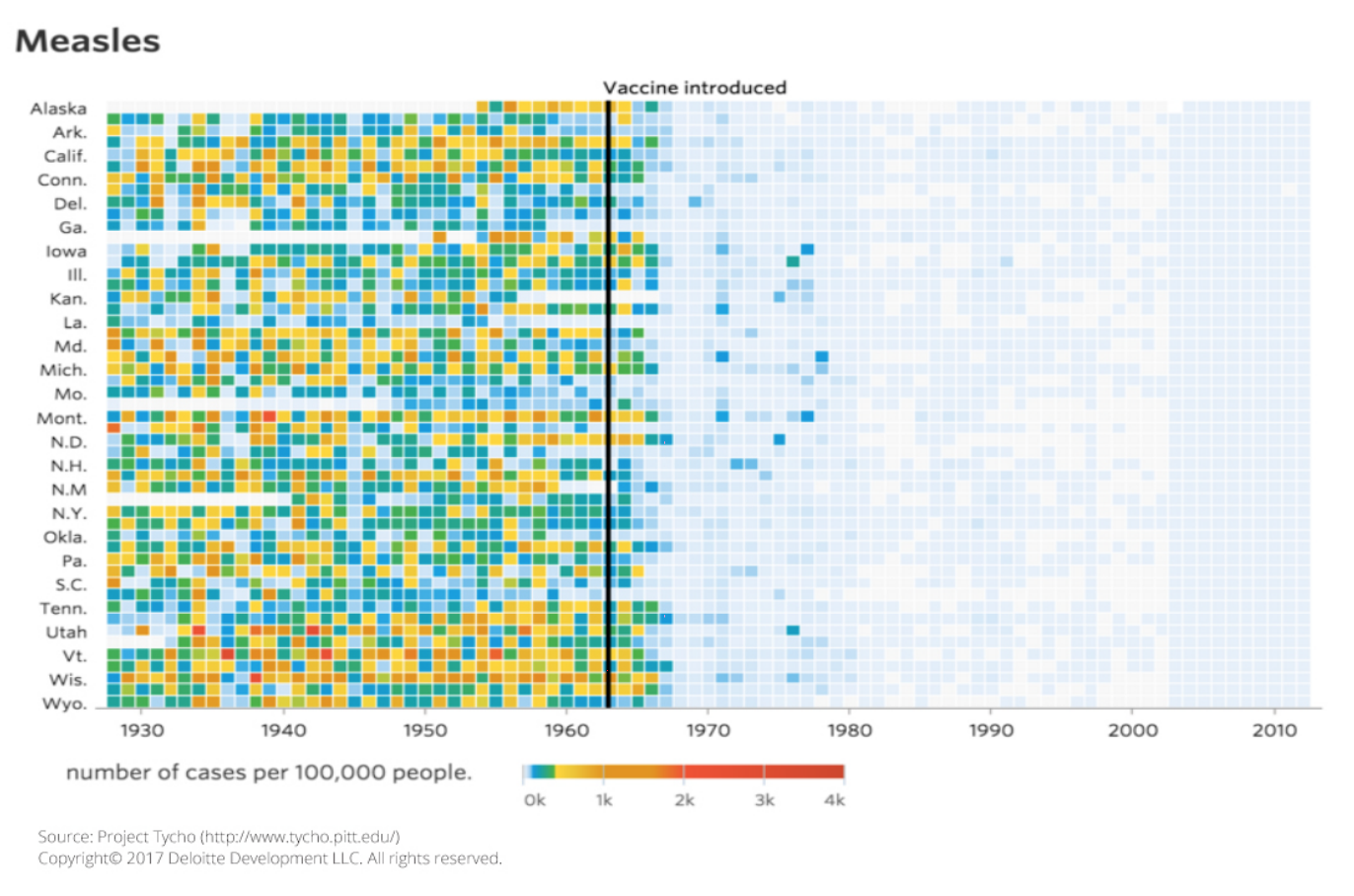We don’t collect buyer intent data just because we think it’s interesting. We collect and provide intent data to our clients in actionable form, because it can help them achieve their goals.
Data helps the most when it can answer questions. And it can be a lot of help when it answers questions quickly.
Data Visualization: Show, Don’t Tell
While it is not always possible, there are times that data can answer questions “at a glance.”
For example, if I wanted to know, at a glance, which pages on my site are getting the most visits, a visual representation of web data such as this does the trick:

Similarly, if I wanted to know if a specific company was exhibiting in-market research behavior (that is, doing more research than usual around particular keywords), a view like this would tell me that immediately:
Using Data to Answer Big Questions
The examples above address a specific moment in time and answer very tactical questions. But what if you had a bigger question? For example, what if you were a public health official and you wanted to know if vaccination was an effective strategy when combating measles?
Well, in that case, a chart like this (which I found here, but which originated at the University of Pittburgh) would answer that question for you instantaneously:
Any Questions?
The examples above clearly show how data visualization can answer questions and accelerate decision making.
In order for that to happen, you need three things.
First, you need to formulate questions that truly matter to your business. Secondly, you need to acquire data that can effectively address those questions. Finally, you need people who know how to work with the data and, above all, visualize it in a way that deciders can work with.
A bias towards action is key to formulating the right questions: What companies are my most promising targets? Which web pages can I best leverage for onsite conversions? What should I do next?
There are two sides to the data equation. On the one side, there’s all the data you generate internally. Is it hopelessly siloed and inaccessible? Or have you aggregated it in a platform so that everyone who needs it can use it?
On the other hand, there is the third-party data that helps you complete the picture. Here, what matters most is accuracy and timeliness. Intent data vendors need to be able to demonstrate how they ensure both.
Finally, there’s the people. Here, again, you need to focus on a bias towards action. The best data analysts will be those who not only know how to use the tools, but also understand that they need to present data in a way that end-users can easily consume and, above all, act on.
Any questions?
Do you know which specific companies are currently in-market to buy your product?
Wouldn’t it be easier to sell to them if you already knew who they were, what they thought of you, and what they thought of your competitors?
Good news – It is now possible to know this, with up to 91% accuracy. Check out Aberdeen’s comprehensive report Demystifying B2B Purchase Intent Data to learn more.

